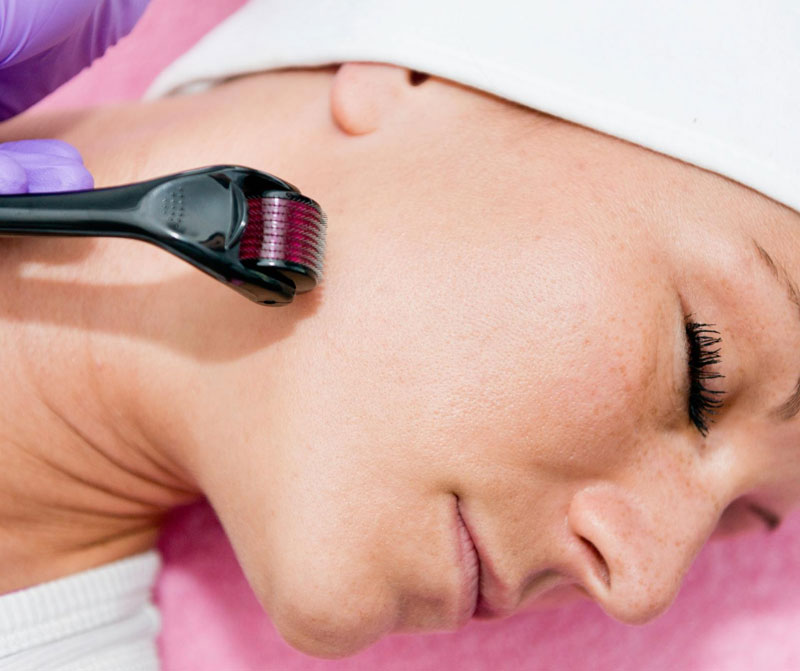What is microneedling?
Microneedling is a minimally invasive cosmetic procedure that’s used to treat skin concerns via collagen production. Also known as collagen induction therapy, this treatment may help those looking to reduce the appearance of acne scars and stretch marks.
It’s also used in certain anti-aging procedures, such as eyelid surgery and sun spots. Though more research is needed, studies have shown the potential benefits of microneedling in promoting hair growth.
You may be an ideal candidate for this procedure if you’re in good health and have certain skin concerns that haven’t responded to home treatments or other types of dermatologic procedures, such as peels.
This may also be a final step before considering cosmetic surgery for anti-aging and other concerns. Learn more about microneedling and talk to your dermatologist to see if this is the right option for your skin.
How much does microneedling cost?
According to estimates by Dermapen, microneedling costs from $100 to $700 per session. Most face treatments run around $300 each session. Click Here for Tox-bar Costs
Since microneedling is considered a cosmetic or aesthetic procedure, it’s not covered by insurance. Your doctor may be able to help you afford your treatments better by structuring a payment plan for you. Some offices even offer financing.
You’ll want to consider all the cumulative costs before committing to the procedure so you won’t have any surprise bills.
If you decide to take time off work, you may also need to consider ways to off-set any lost worktime hours. However, most people are able to go back to work or school right away.
How does microneedling work?
Microneedling works by encouraging your skin to make more collagen. The idea is that pinpricks from the procedure cause slight injury to the skin and that the skin responds by making new collagen-rich tissue.
This new skin tissue is, in turn, more even in tone and texture. It’s normal for the skin to lose collagen via age or injury. By encouraging the skin to make new tissue, there may be more collagen to help make the skin firmer, too.
Procedure for microneedling
During the procedure, your doctor makes small pricks under the skin with a pen-like tool. The pinpricks are so small that you likely won’t notice them after the procedure. Your doctor will move the tool evenly across your skin so that the new skin that rejuvenates will be even, too.
Before getting started, your doctor will use a topical anesthetic to reduce the chances of pain. This is done about an hour before your treatment. Emory University says the actual microneedling process takes approximately 30 minutes.
Your doctor may then apply a serum or calming treatment. In total, you can expect to be at the office for a couple of hours at least.
Targeted areas for microneedling
Microneedling is most often used on your face to target:
- acne scars
- age spots (also called “sun spots”)
- fine lines and wrinkles
- large pores
- other types of scarsTrusted Source
- reduced skin elasticity
- uneven skin tone
In addition to facial concerns, microneedling is sometimes used to treat stretch marks in other areas of the body. One studyTrusted Source found that microneedling was effective for stretch marks on the thighs and abdominal area when combined with fillers.
Scarring on other body parts may also be treated with this procedure. However, microneedling is primarily used on the face.
Are there any risks or side effects?
Like all cosmetic procedures, microneedling isn’t without risk. The most common side effect is minor skin irritation immediately following the procedure. You may also see redness for a few days. Call your doctor if you notice more severe side effects, such as:
- bleeding
- bruising
- infection
- peeling
You may not be an ideal candidate for microneedling if you:
- are pregnant
- have certain skin diseases, such as psoriasis or eczema
- have open wounds
- have had radiation therapy recently
- have a history of skin scars
What to expect after microneedling
Microneedling isn’t invasive like plastic surgery, so the recovery time is minimal. According to Emory University, most people require very little downtime, if any at all.
You may notice skin irritation and redness within the first few days following the procedure. This is a natural response to the small “injuries” made by the needles in your skin.
You can go back to work or school after the procedure if you’re comfortable. Some people apply camouflaging makeup during the first few days as the redness dissipates.
Your skin will also be more sensitive to the sun, so sunscreen is a must.
After microneedling, your skin works fairly quickly to rejuvenate new tissue. In theory, you should see results within a couple of weeks.
To maintain the results of your treatment, you’ll need multiple sessions and perhaps other complementing treatments. Your doctor will advise you on the best plan of action based on your individual goals.
Preparing for microneedling
Before the procedure, talk to your doctor about ways you can prepare so you have the best possible outcome. You may need to stop taking certain medications, such as ibuprofen and those for acne treatment, well in advance of the procedure.
Your doctor may also recommend that you stop using topical retinoids beforehand too. Doing so may reduce the risk of certain side effects.
Schedule Your Consultation Today
Make an appointment at Tox Bar, Northern Kentucky’s Neurotoxin, Dermal Filler, and Microneedling experts, encourage all customers and clients to take care of their skin this winter. We’re here to help answer any questions you may have about your skin and it’s proper care. Offering a wide range of solutions to your skin care conundrums, Tox Bar works with each client to create a care plan that will help meet your specific skin care goals.

